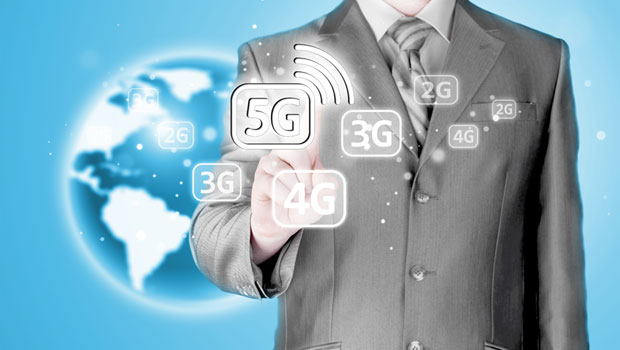Every decade the wireless industry transitions to a new cellular technology, and every generation there are doubts about the new technology. This continues with 5G.
I have heard from consumers and even people within the industry that there is “no need for 5G,” “5G is only for businesses,” “5G won’t be available until 2025,” “mmWave is only for fixed wireless access,” and “radiation from mmWave is harmful” or, as my Uber driver put it, “mmWave will fry your brain.”
These comments typically come from three things: the decade long historical view it took to roll out earlier generations; companies that are behind on developing the technology and are hoping for a later adoption cycle; or ignorance of the technology or the status of the network rollouts and device introductions.
Single Standard
While 5G is another cellular generation, it is much different than previous generations and should not be subject to the negative perceptions.
5G is unique in that it is the first cellular generation that has a single global standard. This is a significant achievement for the wireless industry. Even the trade disputes will not have any impact on the standards.
In addition, 5G does not require a new base radio access technology. 5G is based on the evolution of the orthogonal frequency division multiplexing (OFDM) technology that was the foundation for LTE, which means that LTE also works naturally in conjunction with 5G.
5G also uses many technologies introduced in previous 3GPP standard releases for LTE, including carrier aggregation, use of unlicensed bands, envelope tracking, and new interface technologies like narrowband IoT (NB-IoT).
With the constant evolution of standards through the 3GPP, 5G improves on many of these technologies and leverages new sub-6GHz frequencies and mmWave high-frequency bands (24 GHz to 52 GHz for mobile) and other technologies like dynamic spectrum sharing.
An industry group accelerated the 5G standard by more than two years to complete the first standard for 5G non-standalone mode (used in conjunction with the existing 4G infrastructure) in late 2017 and the standalone mode (completely new 5G network) standard in mid-2018 so that networks and devices could be ready by early 2019. Rollouts of the technology have begun.
Strong Hardware Lineup
From the technology side, baseband modems are available or should be by year end from HiSilicon, MediaTek, Qualcomm, Samsung and Unisoc. A complete RF solution is available from Qualcomm. Other vendors, such as Broadcom, Qorvo and Skyworks, have or are introducing RF components for 5G.
More than 40 OEMs have introduced 5G handsets, most on the Qualcomm Snapdragon platform (SoC, modem and RF). By comparison, there were only three OEMs that offered LTE handsets at the same time in the rollout of LTE. We also are seeing more devices incorporating 5G into the design of industrial equipment for factory automation, smart cities, automobiles, medical devices and many other applications.
On the network side, more than 30 carriers are rolling out 5G in Australia, China, Europe, Japan, Korea, Russia and the U.S. In addition, carriers in other regions are working on their rollout plans. At the recent 5G Summit hosted by Qualcomm, many of the carriers provided details on the status of their network rollouts.
- SKT launched service in South Korea in late 2018 and now has 1.5 million subscribers (15 percent of subscribers) and is targeting 2.5 million by the end of 2019.
- Verizon has 5G service in 13 cities and 13 stadiums in the U.S. and it plans to cover 30 markets by the end of 2019.
- TIM is rolling out service to 10 cities and 200 tourist locations in Italy in 2019 and will have 120 cities and 245 industrial districts by the end of 2020.
- British Telecom has introduced 5G in 20 cities.
- DoCoMo and Rakuten recently introduced service in Japan.
- Chinese carriers are rolling of networks aggressively.
By comparison, there were only four carriers introducing service at the same time in the rollout of LTE.
Early Days
This is not to say that challenges do not remain. Some regions are still working on spectrum allocation, especially for the higher-frequency bands. Also, the design of devices can still be challenging in terms of size and power.
The first devices used multiple baseband chips and additional antennas, especially for mmWave. These not only take up space — they potentially may use more power. I say “may” because much of it depends on the design expertise of the OEM and the efficiency of the network, as we saw with many of the first LTE phones.
OEMs that had poor designs had issues with devices overheating. When using components from multiple vendors, it takes time to optimize the hardware and software to fit within a desired power and thermal envelope, especially when using more silicon components and antennas.
Over time, advanced silicon technology and semiconductor design will improve to shrink the silicon footprint and improve efficiency. However, using technologies like envelope tracking also can reduce power consumption.
As we have seen with microprocessors for the past 20 years, the easiest way to reduce power is to complete a task quickly and then shutdown the unnecessary components or even parts of chips. The Signals Research Group has some performance analysis to demonstrate the higher efficiency of the 5G network, which can improve the efficiency of the devices.
Despite all this, 5G is still in its infancy. Services will continue to roll out, and existing 5G carriers will add new 5G standalone networks (5G SA) and mmWave over the next few years.
Initially, 5G will roll out only in cities and other dense user areas. It will take a year or two for regional coverage of rural areas. The number and size of silicon components will shrink while performance improves.
No Killer App
What remains the greatest challenge for 5G is the lack of a “killer” application — a unique application that sparks new demand. With LTE, it was mobile broadband — the ability to use a mobile device for video, social networking, gaming, and other data-intensive applications. Consumers can do those things today with LTE, but they will get faster data rates, lower latency, better connectivity, and better overall performance with 5G.
There will be a steady growth of industrial applications using 5G, but the industrial market grows in a linear trajectory, not exponential. Although the carriers will benefit from 5G in terms of more efficient network utilization, more devices and applications connecting to the network, and premiums in the first year or two of the 5G rollout, they still can’t pinpoint the killer app to help promote 5G to consumers. With that said, consumers looking to by a new mobile device should only be looking at 5G device to future-proof their purchases.
So, that brings me back to the negative perception of 5G. While some carriers and OEMs are behind on the rollout of 5G networks and devices, respectively, there should be no doubt that 5G is real and available today in the form of networks in select markets, a plethora of smartphones, and a growing number of other devices. In addition, the rollout of 5G is proceeding faster than any previous wireless generation.
While there is no obvious killer app for 5G yet, it will benefit consumers as they use more data, especially for sharing higher resolution photos, video and gaming content. While there may be some design challenges, the technologies meet industry standards and will fit into a smartphone or other mobile device today.
Even in the case of mmWave, anyone who has seen demos of the technology in a handset will tell you that it is impressive. It does not require line-of-sight communications because high-frequency signals do bounce off solid surfaces. This include humans — so mmWave will not fry your brain.
The negative perceptions of 5G are not warranted. 5G is real and is a significant improvement in technology that will accommodate the exponential growth in devices and mobile data through improved spectrum efficiency and higher performance.
In addition, everyone — from consumers to enterprises and other entities — will benefit from 5G, so don’t believe the naysayers.























































